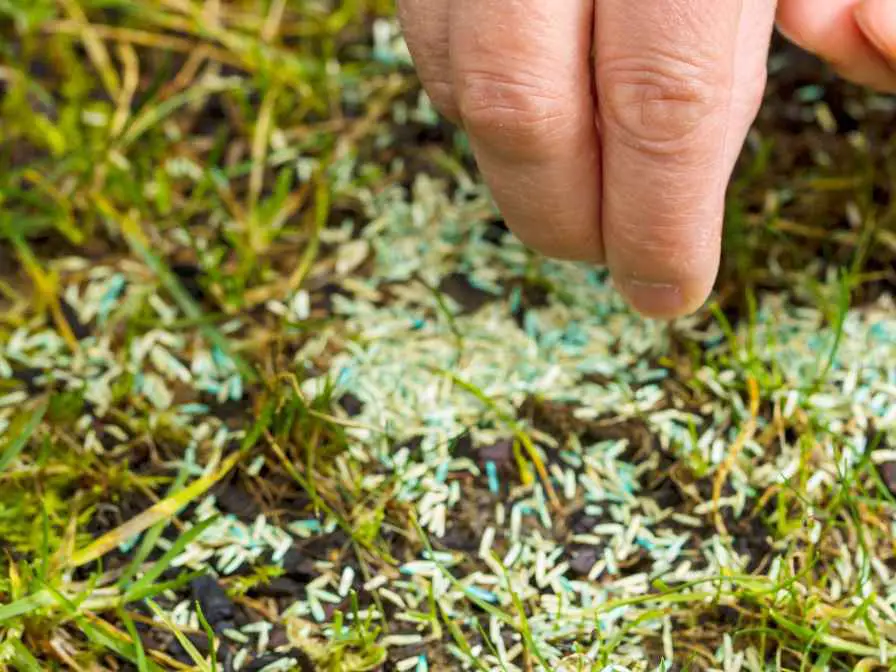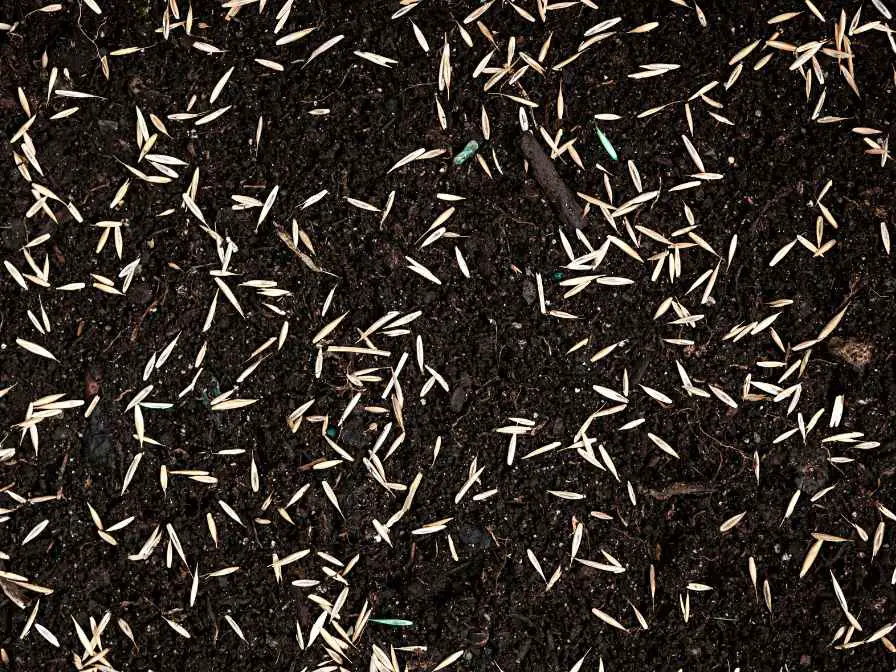Planting grass is a great activity for a gardener. It is because the grass is an essential part of any garden. you can go for any grass, that can fulfill your requirement. Gardeners do wonder if can you plant grass seeds in winter so that they can get a good green presence in the springs.

Growing Grass in the Garden
Growing grass in a garden can add beauty and vitality to your outdoor space. Whether you want a lush green lawn for recreational activities or a carpet of grass to enhance the overall aesthetic appeal, here are some general tips to help you successfully grow grass in your garden.
Soil preparation is crucial for healthy grass growth. Start by clearing the area of any weeds, rocks, or debris. Loosen the topsoil using a rake or garden tiller to create a favorable environment for root penetration and water absorption.
Testing the soil pH and nutrient levels can help you determine if any amendments, such as lime or fertilizer, are needed to optimize soil conditions for grass growth. Choosing the right grass seed or sod is important.
Factors to Consider For Planting Grass Seeds
Consider factors such as climate, sunlight exposure, and the amount of foot traffic the grass will endure. Cool-season grasses like Kentucky bluegrass and fescue are suitable for regions with moderate temperatures, while grasses for warmer seasons like Zoysia or Bermuda thrive in hotter climates.
Sod provides instant gratification with an established lawn, but seeding allows for a wider variety of grass types and is often more cost-effective. Proper watering and maintenance are essential for nurturing young grass and maintaining a healthy lawn.
Water the newly seeded area regularly, keeping the soil moist but not saturated. As the grass establishes, water deeply but infrequently to encourage deep root growth. Mow the grass to a recommended height, removing no more than one-third of the grass blade at a time.
Regularly fertilize the lawn to provide the necessary nutrients for growth and address any weed or pest issues promptly to prevent them from overtaking the grass.
Remember that growing grass requires patience and ongoing care. With proper soil preparation, selecting the right grass type, and diligent maintenance, you can create a vibrant and inviting garden space filled with healthy, lush green grass.
Can grass seeds be planted in the winter?
Planting grass seeds during winter can be challenging, as grass generally prefers warmer conditions to germinate and grow. However, it is possible to plant certain types of cool-season grasses in late fall or early winter, depending on your geographical location and climate. Here’s a detailed explanation of the process:
Choose the right Grass type
Grasses for cooler seasons like Kentucky bluegrass, ryegrass, fescue, and bent grass, are more suitable for winter planting. These grasses can tolerate cooler temperatures and have a higher chance of successful germination during winter.
Timing
The ideal time for winter grass seeding varies depending on your location. Generally, it’s best to plant grass seeds in late fall or early winter, when the soil temperature is cool but not frozen. Aim for a period where the soil temperature consistently stays between 50-65°F (10-18°C) for optimal seed germination.
Soil preparation
Prepare the soil before seeding by removing any existing vegetation, weeds, and debris. Loosen the topsoil to a depth of around 4-6 inches (10-15 cm) using a rake or a garden tiller. This will help the grass seeds make good contact with the soil.
Soil testing and amendment
To find out the pH and nutritional content of the soil, test it. If required, alter the pH level by adding lime to raise it or Sulphur to reduce it. Follow the recommendations from your soil test results to provide the appropriate nutrients and amendments, such as fertilizer or compost, to improve soil quality.
Seed selection and preparation
Choose high-quality grass seed that is suitable for your region and intended use. Read the seed packaging for specific instructions regarding planting depth and seeding rates. Some grass seeds may require soaking in water overnight before planting to promote faster germination.
Spreading the seeds
Use a broadcast spreader or a handheld spreader to evenly distribute the grass seeds over the prepared soil. For better coverage, spread half the seeds in one direction and the remaining half in a perpendicular direction. Lightly rake the seeds into the soil to ensure good seed-to-soil contact.
Watering
After seeding, water the area thoroughly but gently. Use a fine mist or sprinkler to avoid washing away the seeds. Ensure that the soil remains consistently moist, but avoid overwatering, as it can lead to seed rot or disease. Water as needed, depending on the weather conditions and soil moisture levels.
Protecting the seeds
To protect the newly planted seeds from extreme cold and harsh weather conditions, consider covering the seeded area with straw, hay, or a specialized erosion control blanket. This cover will help retain moisture, provide insulation, and prevent the seeds from being washed away by rain or snow.
Winter maintenance
During the winter months, monitor the seeded area for any signs of dryness or inadequate moisture. Water lightly if necessary, but be cautious not to saturate the soil. Keep foot traffic to a minimum and avoid heavy machinery or activities that could disturb fragile grass seedlings.
Spring Care for Grass Seeds
As the weather warms up in spring, the grass seeds should start to germinate. Continue regular watering as needed, following the specific requirements of the grass type you planted. Gradually reduce the watering frequency as the grass becomes established and grows taller.
Remember, winter seeding of grass is generally considered more challenging and less reliable than spring or fall seeding. If possible, it’s advisable to wait until the optimal spring or fall seasons to achieve better results. Consult with local gardening experts or agricultural extension services to determine the best approach for your specific location and climate.
Taking Care of Grass Seeds Planted in Winters

Taking care of grass seeds planted in winter requires some specific considerations due to the colder conditions. Here are a few tips to help you care for your winter-planted grass seeds:
Moisture management
Winter weather can be challenging for seed germination, as the soil tends to be colder and there may be less natural rainfall. It’s crucial to keep the seeded area consistently moist but avoid overwatering, which can lead to rot or disease.
Water lightly and regularly, taking care not to let the soil dry out. Use a gentle mist or sprinkler to prevent disturbing the seeds and ensure even coverage.
Protection from harsh weather
Cold temperatures, frost, and snow can affect the germination and growth of grass seeds. Consider protecting the seeded area by covering it with straw, hay, or an erosion-control blanket. This cover will provide insulation, help retain moisture, and safeguard the seeds from being washed away by rain or snow. Remove the cover once the weather starts to warm up in spring.
Minimize foot traffic and disturbances
During the winter months, avoid walking or allowing heavy traffic in the seeded area. The delicate grass seedlings can be easily damaged, and compacted soil may hinder their growth. Restrict activities that could disturb the seeds, such as using heavy machinery or engaging in sports or recreational activities on the newly seeded lawn.
Monitor for disease and pests
Although less common during winter, some diseases and pests can still affect grass seeds. Keep an eye out for signs of disease, such as discoloration or wilting, and take appropriate measures if necessary. Additionally, be vigilant about any potential pest activity and address it promptly to prevent damage to the young grass.
Gradual transition to spring care
As the weather begins to warm up in spring, the grass seeds should start to germinate and grow. The transition from winter care to regular spring maintenance practices. Gradually reduce the frequency of watering as the grass becomes established and adjust your care routine based on the specific needs of the grass type you planted.
In a nutshell, grass seeds can be planted in the winter season. Although the grass seeds like the good and warmer temperatures, with proper care and maintenance you would be able to get good grass in the spring season.
FAQs
What is the best time to plant grass seeds?
You can plant grass seeds in the winter and get a good success rate with proper care and maintenance. But the ideal time for the grass seeds plantation is early spring or late summer. It will get the growth advantage to the grass through the rain.
What is the fastest-growing grass variety?
There are many varieties of grass that are available for fast growth. But the Bermuda grass is known for its fast growth all over the world. Rey grass also grows quickly in cooler climates.
What is the best soil for overseeding grass?
Compost is the best option if you are going to opt for over-seeding of grass or you want to repair the patches. Compost also makes the existing soil better for the growth of grass.

